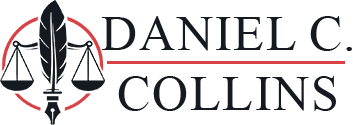Discharging student loan debt through bankruptcy is often viewed as a challenging and unlikely option, but it is not impossible. While student loans are generally treated differently from other types of debt in bankruptcy proceedings, recent developments and changes in policy have made it more feasible for borrowers to seek relief. This blog will explore the process of discharging student loans in bankruptcy, the criteria for “undue hardship,” and the implications of recent policy changes.
The Current State of Student Loan Discharge in Bankruptcy
Under the U.S. Bankruptcy Code, specifically Section 523(a)(8), student loans are not automatically discharged in bankruptcy. Instead, borrowers must demonstrate that repaying their loans would cause an “undue hardship,” a standard that has historically been difficult to meet48. This requires filing an additional legal action within the bankruptcy case known as an adversary proceeding12.
Adversary Proceeding
An adversary proceeding is essentially a lawsuit within the bankruptcy case where the borrower argues that their student loans should be discharged due to undue hardship. This process involves presenting evidence to support the claim, often including financial records, employment history, and other relevant documents26.
What Constitutes “Undue Hardship”?
The concept of “undue hardship” is central to discharging student loans in bankruptcy. Courts typically apply one of two tests to determine whether a borrower meets this standard:
- Brunner Test: This is the most commonly used test, which assesses whether:
- If The borrower can maintain a minimal standard of living if forced to repay the loans.
- Additional circumstances exist indicating that this hardship will persist for a significant portion of the repayment period.
- The borrower has made good faith efforts to repay the loans before filing for bankruptcy2.
- Totality of the Circumstances Test: Some courts use this broader test, which considers all relevant factors affecting the borrower’s financial situation without focusing on good faith efforts to repay2.
Recent Developments in Student Loan Bankruptcy
In recent years, there has been a shift in how student loan discharges are handled in bankruptcy. The Biden Administration introduced new guidance aimed at making it easier for borrowers to demonstrate undue hardship and secure discharges. This guidance involves a more streamlined process where borrowers submit a financial attestation form detailing their hardships. If the Department of Justice agrees that the borrower meets the undue hardship standard, they will not oppose the discharge in court3.
High Approval Rates Under New Guidance
Data from the Education Department indicates that under this new approach, nearly 99% of cases where courts have entered orders have resulted in full or partial discharges of federal student loan debt3. This marks a significant increase in successful discharges compared to previous years.
Private vs. Federal Student Loans
While federal student loans are subject to the undue hardship standard, private student loans are treated more like other consumer debts in bankruptcy. This means they can be discharged more easily, similar to credit card debt or personal loans. However, borrowers still need to file an adversary proceeding to request relief from private student loan debt, demonstrating undue hardship if required by the court5 .
Alternatives to Bankruptcy for Managing Student Loans
Before considering bankruptcy, borrowers should explore other options for managing their student loan debt:
- Income-Driven Repayment (IDR) Plans: These plans adjust monthly payments based on income and family size, potentially leading to forgiveness after a set period (e.g., 20 or 25 years).
- Deferment and Forbearance: Temporary options that allow borrowers to pause payments due to financial hardship.
- Loan Consolidation: Combining multiple loans into one with a single interest rate and payment.
- Public Service Loan Forgiveness (PSLF): Forgiveness for borrowers working in public service roles after making qualifying payments.
These alternatives can provide relief without the need for bankruptcy, which should be considered a last resort due to its impact on credit scores and financial stability2.
Proposed Legislation: The Student Borrower Bankruptcy Relief Act
Efforts are underway to reform bankruptcy laws related to student loans. The Student Borrower Bankruptcy Relief Act aims to eliminate the undue hardship requirement for discharging student loans, allowing borrowers to treat these debts similarly to other consumer debts in bankruptcy4. If passed, this legislation could significantly simplify the process for borrowers seeking relief from overwhelming student loan debt.
Conclusion
Discharging student loan debt in bankruptcy is challenging but not impossible. Recent policy changes have made it more feasible for borrowers to demonstrate undue hardship and secure discharges. While bankruptcy should be approached cautiously due to its potential long-term financial implications, it can provide a necessary lifeline for those facing insurmountable debt.Before pursuing bankruptcy, borrowers should explore all available alternatives for managing their student loans. Consulting with a bankruptcy attorney experienced in handling student loan cases can help determine the best course of action based on individual circumstances.
Disclaimer
The information provided on this blog is for general informational purposes only and is not intended to serve as legal advice. While I am a paralegal, I am not a licensed attorney, and the content shared here should not be construed as such.
No attorney-client relationship is formed through the use of this blog or by any communication with me. For specific legal advice tailored to your situation, please consult with a qualified attorney who is licensed to practice law in your jurisdiction.
I strive to ensure that the information presented is accurate and up-to-date; however, I make no representations or warranties regarding the completeness, accuracy, reliability, suitability, or availability of any information contained on this blog. Any reliance you place on such information is strictly at your own risk.
Thank you for visiting my blog, and please feel free to reach out with any questions or comments!
